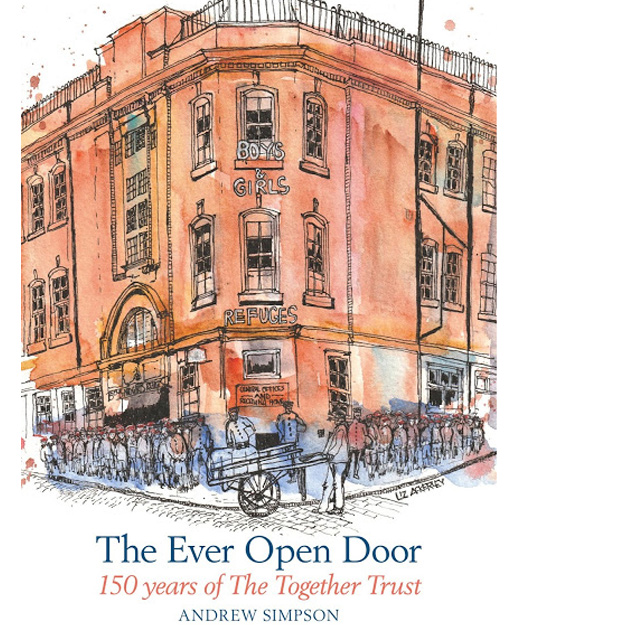The Ever Open Door: 150 years of the Together Trust
Book review

The Ever Open Door: 150 years of the Together Trust, Andrew Simpson, The Together Trust, 2020, 140p, £14-99. ISBN 978-1-5272-5671-2
From its earliest beginnings in Manchester 1870 as a ‘Night Refuge for Homeless Boys’, through being transformed into the ‘Manchester and Salford Boys and Girls Refuges and Homes’ and then the ‘Boys and Girls Welfare Society’, what is now known as The Together Trust has an exceptional record within the charitable and voluntary sector. This organisation has evolved over 150 years, developing its role in response to changing needs, with strong and persistent charitable support from within the business and wider community.
What Andrew Simpson offers is a chronological analysis of exactly how this evolving organisation moved about the area, including how it came to occupy in present modern-day base in Cheadle, all the time explaining exactly what social, economic and physical challenges were being confronted. It is a very interesting survey of how exactly the Trust has responded so positively to the changing needs of communities facing economic hardship and physical challenge. From the very early ‘Shoeblack Brigade’ and ‘Messenger Brigade’ in 1870, through their work with, and commitment to, discharged prisoners from Strangeways Prison, to their current specialisms in dealing with autism, the breadth of their activity over the last century and a half has been enormous, as has the impact of what they have achieved for an ever-widening community.
This evolving organisation had existed for nearly forty years before the emergence of the first signs of the Welfare State under the Liberal Government (1905-14) and they have ever since worked in partnership with various stages of the Welfare State. Indeed with some of the modern modification in provision in our age of austerity, it may almost seem that this huge voluntary and charitable body has now adopted some of the roles and functions previously provided directly by local and central government.
Anyone interested in exactly how charitable cared for the young people in their care a century or so ago will find this very informative. Many of us have relatives whose lives brought them into the very areas of need that were addressed by this incredibly-motivated organisation and this very readable book will help understand better what they faced and how good people set out to help them.

